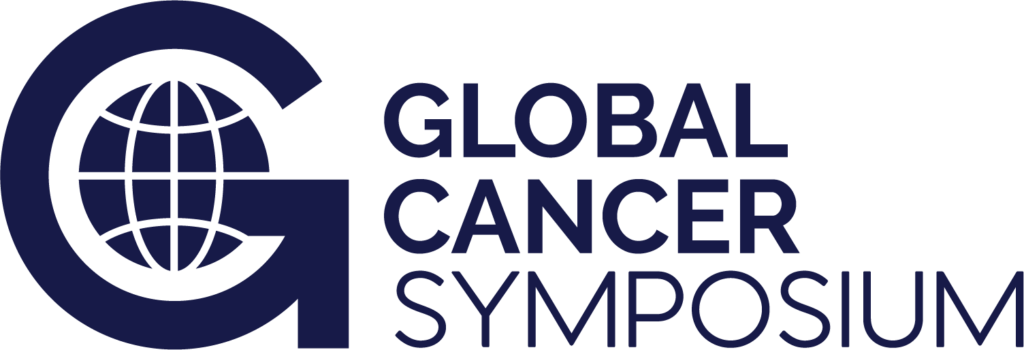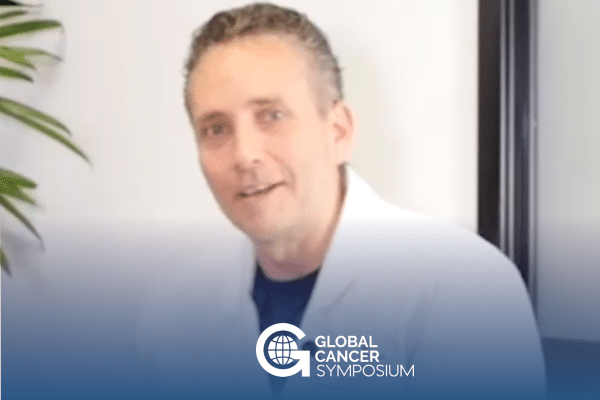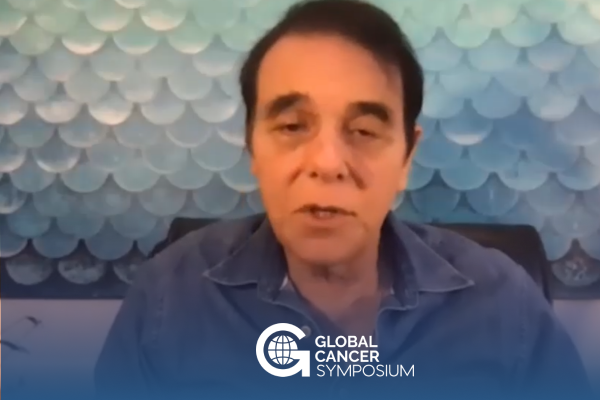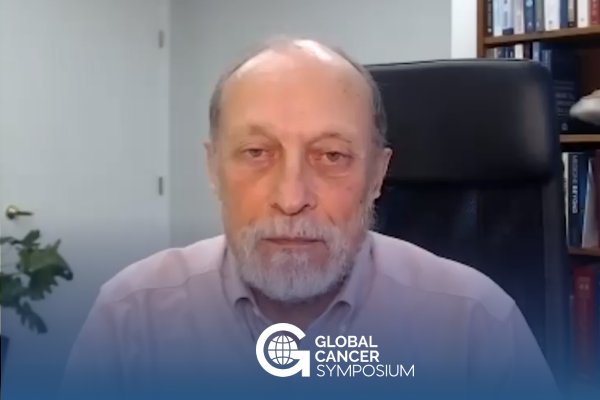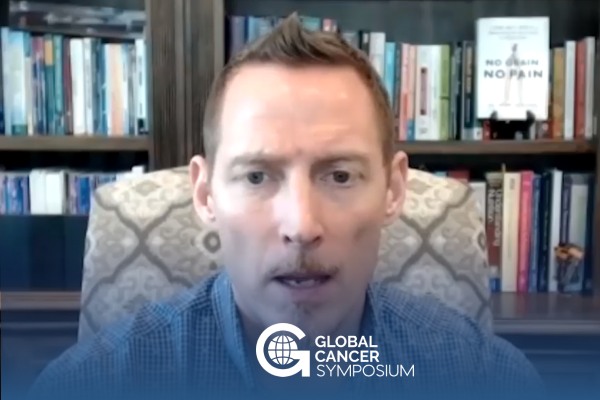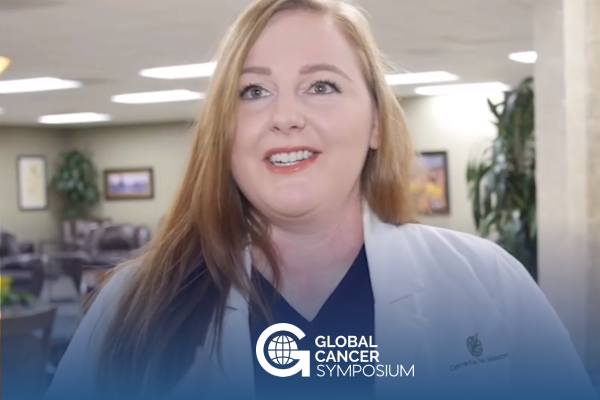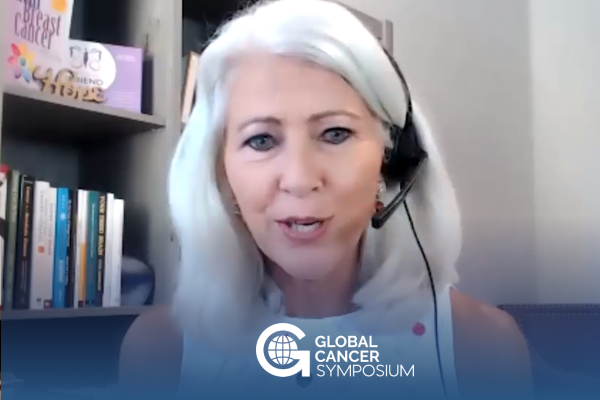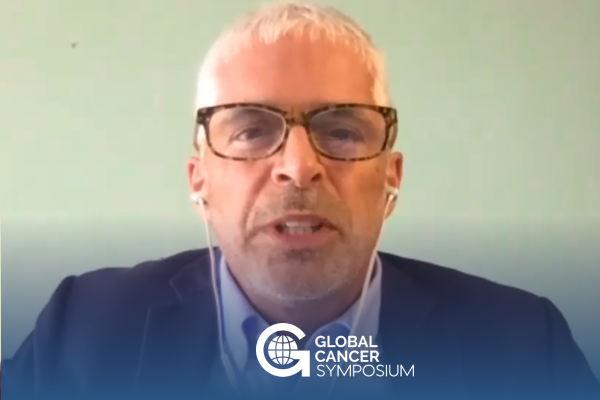Join the discussion below
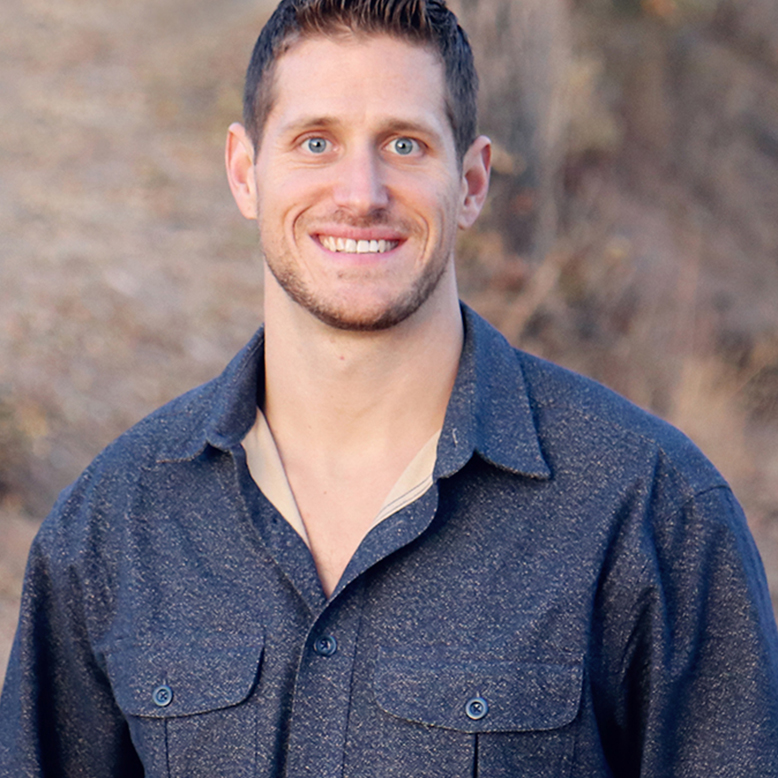
Nathan Crane is an award-winning author, inspirational speaker, plant-based athlete, event producer and 18x award-winning documentary filmmaker. Nathan is the Founder of The Panacea Community, Creator of the Global Cancer Symposium, and Director and Producer of the documentary film, Cancer; The Integrative Perspective. He is also the Director of Strategic... Read More
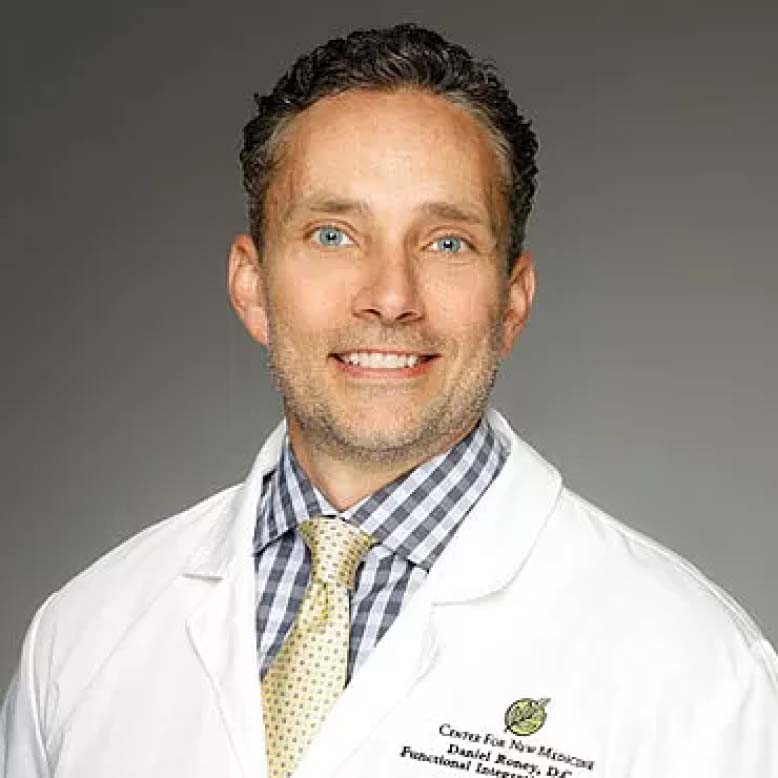
Dr. Roney received his undergraduate degree with concentrations in Biology and Sports Medicine. While in school, he worked as an Athletic Trainer, and later at some of the top rehab hospitals in the country. The experience working in the hospital opened his eyes to how sick of a nation we... Read More
Upon completion of his Chiropractic degree, he began to pursue courses in a somewhat new field called Functional Medicine. This changed his life as a healthcare provider. He learned how to heal a person at the cellular level, from the inside out. Dr. Roney was diagnosed with melanoma, the deadliest form of skin cancer. He was following a very healthy lifestyle, but this really forced him to research why, at 28, he had a potentially deadly form of cancer.
Nathan Crane
Hey, it’s Nathan Crane, Director of the Health and Healing Club and Host of the Conquering Cancer Summit, and today I am honored and excited to welcome you to a very special interview. I’m Nathan Crane. I’m your host for this symposium. I want to welcome you to a great conversation here with Dr. Daniel Roney at the Cancer Center for Healing. He’s the director of the Cancer Center for Healing here in Irvine, California. I’ve been doing some amazing interviews here with your colleagues and your team. It’s really fascinating to be in a place like this where you have this incredible team of people that’s working hands-on with thousands of patients. Obviously you have the Cancer Center, which is specifically focused on helping people with cancer, and you have the Center for New Medicine, which is also helping people with all kinds of things, all kinds of illnesses and diseases. And so you really get a very integral viewpoint and approach to treating people who are dealing with cancer and other chronic diseases.
Daniel Rodney D.C.
Yeah. Yeah, it’s fantastic. The resources are fantastic.
Nathan Crane
Yeah, it’s incredible. I mean, I’ve been researching and interviewing not only in the natural health field for 15 years, but also specifically cancer since 2013. I’ve done hundreds of interviews, produced conferences, summits, documentaries, interviewed the top minds in the world. And I come here and I’m learning new things I’ve ever even heard of. And I’m like, wow, this is fascinating. New tools and resources and gadgets and–
Daniel Rodney D.C.
It’s that curiosity, especially Dr. Connealy. Dr. Connealy, she’ll email me on the weekend. She’ll text me on the weekends. She’s always looking for things that could help the patient, and that funnels down to us and we want to be as great. So with the providers here, it’s just this constant, almost a little competition, which is a good thing–
Nathan Crane
It’s a healthy competition.
Daniel Rodney D.C.
Great.
Nathan Crane
Try and do your best job for the patient.
Daniel Rodney D.C.
That’s exactly right. It’s all about the patient.
Nathan Crane
Well, thanks for sitting with us. Thanks for spending your time.
Daniel Rodney D.C.
Pleasure to be here. Pleasure to be here.
Nathan Crane
Share a little bit. So we’re gonna talk about what you call the four pillars.
Daniel Rodney D.C.
Four pillars of cancer care.
Nathan Crane
Okay, we want to get into that in a moment, which is, you were telling me is foundational to really how you work with every new patient that comes through here.
Daniel Rodney D.C.
Correct.
Nathan Crane
Before we do, give us just a couple minutes of your background, your history, where you came from and how you came to be involved in the center.
Daniel Rodney D.C.
Love to. So started out undergrad athletic training sports medicine. Was an athlete in college. Really wanted to go that direction. Wasn’t really sure. Should I do the PT route, athletic training route, orthopedic, get into orthopedics? I decided on chiropractic. This was probably back late 90s, early 2000s, because I felt it could accentuate what I could do for the athlete. And I graduated and as it played out, you open a practice and you just get flooded with people like us. Less of the athletes and more of the people just going through their day, having a rough time, neck, backs, what have you, knees, shoulders, etc. So we set up a facility that had chiro, rehab, acupuncture, massage and felt like we were doing a good job.
However, there was a segment of the population that just wouldn’t improve. Couldn’t figure it out. Called colleagues. Now at that point, I’m young in my career. So you’re thinking you’re missing something. And the reality is, I put together files that weren’t getting better. Then we started to see a common thread. They had gut issues. They had inflammatory conditions. They had auto-immune diseases. They had thyroid and adrenal imbalances. So you started to see these–
Nathan Crane
And these are just people dealing with like chronic pain, mostly?
Daniel Rodney D.C.
Exactly.
Nathan Crane
And they weren’t getting better and you notice these underlying chronic conditions.
Daniel Rodney D.C.
That’s exactly right. So a light bulb kind of goes off and you’re thinking, okay, there’s probably more to the story. Now, even at that time, when you’re seeing a good amount of people, you get a good amount of caseload to work from, right? So the experience gets more and more. And what I started to see was this concept of, man, people are just getting overloaded. They’re getting overwhelmed, whether it’s their foods or whether it’s their lifestyle or their stressors or what have you. And I thought, if I’m going to really be able to change people’s health as opposed to just Band-Aid potentially their problems, I’m going to have going to have to really learn a little bit more here. And actually it turned into a can of worms where it was 20 years later. It’s a lot more I’m learning every day.
Nathan Crane
Yeah.
Daniel Rodney D.C.
So that was how I got into this functional medicine world. And I’ll tell you, it’s probably the best decision I’ve ever made because the ability to help people went just from here to here. And not just help them, but really help them heal at a metabolic or cellular level. And we took that approach and we applied it here with the cancer patients as well.
Nathan Crane
What were some of the things initially in your functional medicine training that gave you such a huge aha, that helped you to actually recognize how you could support those patients that weren’t healing?
Daniel Rodney D.C.
Yeah, I mean, it was this, I call it a checklist. Now I call it a checklist. Back then you’re just learning things. But the checklist included number one, inflammation. So if you really delve into the research, inflammation is at the core of most, if not all chronic disease. So that’s the start of it. So I learned the pathways that basically become aberrant, if you will, that lead to this inflammatory response. So if we’re, briefly we’ll get into that. Basically you have fire, I’ll call it fire of the immune system, and then you have fuels, right? So this fire, you get inflammatory what they’ll call proteins or cytokines. People get this cytokine storm. And then the cytokine storm will cause things like glutathione to start to become deficient, which is the body’s most powerful antioxidant, anti-inflammatory. And then we get a dysregulation of what they call the T regulatory cells.
So they get confused. So now they’re not necessarily controlling your T-cells, which are the attackers, your B-cells. They get kind of confused. The suppressor cells start to get lower. And all of a sudden we have this immune system compromise, or as it’s termed in the literature, dysregulation. And when that starts to happen, the body is going to go through a tough time in the sense that your body’s no longer gonna recognize, necessarily recognize good from bad or bad from good. And that’s a challenge, obviously when it comes to something like cancer. So when we’re talking about that immune system, it’s let’s calm the fuel to the fire. So we can use things like turmeric or curcumin and resveratrols. We can use the vitamin Ds to regulate that immune system better. Your glutathione’s, your omega-3s, etc.
So we’re pouring water on that fire. The second part is we have to get rid of the fuels to the fire. So what gasolines, what propellants are fueling that cytokine storm? Now in part, what also happens is we start to lose our barrier systems, right? So the gut barrier. So when you ask that question, the first thing that always comes to mind is the digestive system. It’s 70% of your immune barrier. So if we have this inflammatory cytokine storm consistently going on, our gut lining or our tight junctions will start to widen, and that creates permeability, and that permeability will allow, unfortunately, everything from toxins, undigested proteins, pathogens to start permeating through the digestive wall. And now we’re setting up more of that inflammatory storm because the immune system doesn’t know what to do with those, so it just attacks.
Nathan Crane
And now we’ve got auto-immune issues that are being developed.
Daniel Rodney D.C.
Exactly right. I think statistically autoimmunes are on an epidemic rise.
Nathan Crane
I mean, I just did an interview actually for this symposium. We’ve covered auto-immunity quite a bit.
Daniel Rodney D.C.
Sure.
Nathan Crane
Dr. Peter Osborne.
Daniel Rodney D.C.
Yeah, excellent.
Nathan Crane
And a couple of others that I encourage you to watch because some of the statistics that I’ve heard now, ’cause they don’t group autoimmune disease as one. There’s like over 100 autoimmune diseases. But if they group them all as one, it’s actually now worse than cancer.
Daniel Rodney D.C.
No question.
Nathan Crane
Which we know autoimmune is also a precursor to cancer.
Daniel Rodney D.C.
Yeah, and with that, it’s because the immune system gets so overwhelmed with the fuels. So as we’ll talk about in just a minute with the fourth pillar of the four pillar approach is, well, what caused this? What happened in that cellular environment that created this immune system to become so disoriented, if you will, that it no longer recognizes those bad cells and cannot do its job? And those can be everything from what we eat of course, but that gut health is paramount. We have the microbiome gets dysbiotic they’ll call it, where we have too much bad and not enough good. And then we can be overridden with fungal infections like yeast overgrowth and parasites and SIBO, which is small intestinal bacteria overgrowth. And now all of a sudden, we’re just constantly, not only do we have that leaky gut that we talked about, but now we have a chronic infection in the gut that is facilitating more and more of that permeability. So it’s like, you look there and then you look at other infections like your chronic viral infections. You look at molds, as an example. The oral cavity now we’re heavily isolating too, to find out if there’s bacterial infections under these–
Nathan Crane
Root canals, right?
Daniel Rodney D.C.
Exactly, these cavitations, exactly right. We’re looking at non-metal toxins and heavy metals. Those are what can contribute to what they call an antigenic response. Not to get too technical, but it’s, this is a foreign invader. My body has to do something with it. The more of those that are in your body, the more the immune system is going to have to overwork and get more dysregulated.
Nathan Crane
And then cancer is just gonna keep growing and growing.
Daniel Rodney D.C.
It’s exactly right. It’s like a boxer in the 15th round instead of a boxer in the first round. So I tell everybody, our main objective, if big picture, if I’m trying to explain it in a simplified form is to pour water on that fire. Try to get that fire controlled somewhat. But then we have to go through a checklist of getting rid of those fuels to the fire. If we can do that, we have a really good formula to be able to get the body and at the cellular level, more balanced, more in that homeostatic equilibrium type of environment. And I think that big picture, I think that allows us to give our patients the best chance to heal. So we always talk about maximizing the upside and minimizing the downside. You’ve been in this realm quite a while. You know, there’s no real guarantee. But we have to do everything we can based on the research.
Nathan Crane
Exactly.
Daniel Rodney D.C.
That’s why here is so good because Dr. Connealy has put this together with that thought process and every day it’s just curious, curious, curious, what else, what else, what else? And that’s kind of what, the beauty of being here as a provider. But then what I try to articulate to the patients, it’s just, it’s hard to find under one roof.
Nathan Crane
Right. And if you go to this doctor and this practitioner and this holistic physician and so on and so forth, you may end up getting five different answers and opposing protocols too, because they’re not quite working together and looking at the literature together and working with patients together as well.
Daniel Rodney D.C.
That’s exactly right.
Nathan Crane
So that can be challenging.
Daniel Rodney D.C.
Yeah, absolutely. It’s the communication. I’ve always said, I think healthcare providers get into this world because they really genuinely want to help people. I think they get caught with their everyday schedules and rigmarole I’ll call it, right? And they just don’t have the time to keep reaching out to these other providers. And I found that personally. So I was in private practice for 17 years or so. And the main thing that I had a problem with was finding other providers that I could team up with because I knew, this is that ego. You throw the ego out the door. If I’m helping you and I know I’m deficient at something, I don’t sleep well knowing that I haven’t helped you with that deficiency, right? And it could be these chronic viruses per se, or chronic infections that, okay, I don’t have enough knowledge in this area potentially but I need somebody who could. Well, you try to reach out, you try to refer them out and the communication or the way you treat a patient is not exactly the way they would. And it became very difficult. So again, to your point, here under one roof with everybody like-minded and everybody really pushing hard so the patient gets the best care possible, it’s not a problem. People are willing to jump in and help out and take the extra time.
Nathan Crane
So what are the four pillars that you look at when you’re working with patients?
Daniel Rodney D.C.
So the first poll, excuse me, first pillar is how we test it. So obviously there’s a ton of different labs that we want to look at, but generally we want to get a baseline for sure. And then there’s the other test, the diagnostic test, whether it’s MRIs and CAT scans and ultrasounds and things like that. But to me, one of the best tests that we provide is something called the RGCC test.
Nathan Crane
Yep, we talked about it quite a bit with your other colleagues. It sounds like such an amazing test.
Daniel Rodney D.C.
From a standpoint of individualizing the care, I don’t think it can get any better. So the idea is the push in today’s world is individualized medicine, right? And for sure in the cancer world. So we could have 20 patients with the same diagnosis, but their treatment should be theoretically different. It shouldn’t be the same chemo agents and then the same this, and the same that. We want to make sure that we look at the patient as that individual. And then we could start tailoring their treatment protocol to that. So in that pillar one, the testing becomes very important, especially the RGCC.
And there’s many others, but the RGCC allows us to get into pillar two, which is what treatment are we going to provide? So as an example, when we’re looking at RGCC and we’re getting from that test, we’re getting the chemo agents that your body is going to respond most favorably to. And then we’re also getting the natural agents that your body will respond most favorably to. So we don’t have to guess. And then there’s some other things that we do here at the clinic to figure out what combo of those will work best.
Nathan Crane
Together.
Daniel Rodney D.C.
Together, yeah. It’s not just finding the ones that your body might respond best to, but biochemically or DNA wise, we have to figure out which two will work together. Multiple ones will work together. That’s a whole other level that we’ve been working on.
Nathan Crane
Interesting.
Daniel Rodney D.C.
And again, if we’re comparing and contrasting, it’s just a matter of making sure that we can individualize it. I think that’s super important and we always talk, and you might think the same way, I look at it, if I’m going through this, what would make the most sense to me? And I think that’s always the best way to practice as a healthcare provider.
Nathan Crane
I mean, that’s one of the reasons that I, after my grandfather passed away, not only from cancer, but really I say from the conventional treatment, because he had a fairly normal life, wasn’t very healthy obviously, but active, and then went through chemotherapy and radiation and died very quickly after and was in so much pain because of that. It set me on this path of exactly that. It’s like, okay, I want to learn everything I possibly can about cancer, especially it’s most effective treatments. And I’d already been in the natural health field for a good seven or eight years before that. So I knew I needed to focus on natural, holistic, integrative. And not only for myself, but for my family, and then being able to help people all over world.
Daniel Rodney D.C.
That’s exactly right. That’s great.
Nathan Crane
And that’s it–
Daniel Rodney D.C.
There’s a mission.
Nathan Crane
Exactly.
Daniel Rodney D.C.
It’s awesome.
Nathan Crane
For people tuning in, whether you have cancer and you’re learning for yourself, or you’re learning for a loved one, or you’re learning for prevention, or you’re learning for wanting to help others as well, I think that’s a key critical piece that you mentioned a little bit ago. I don’t want us just to gloss over, as you said, the ego has got to go out the window. And we have to be willing to say, recognize we don’t know what we don’t know.
Daniel Rodney D.C.
That’s exactly right.
Nathan Crane
And what we think we know may be right, or it may have some holes in it.
Daniel Rodney D.C.
That’s right.
Nathan Crane
And so we need to keep educating ourselves in this process.
Daniel Rodney D.C.
And then also bring in other providers that can fill in the blanks because it’s not about us. It’s about, at the end of the day, we have to go home at night knowing we did everything we could. And to a little bit parallel that, my father in 1998 was diagnosed. I remember getting the call, lung cancer, metastasis to the spine, stage four. We took him to University Penn. We took him to a bunch of different places. And at that time, I was at the very embryonic stages of learning about this. I was so overwhelmed. I had no idea who to call, what to do. And unfortunately, three months later he passed. And they told us from day one, look, this is, it’s all over the place. And so with that though, I look back and I didn’t have any of the tools or the resources.
So it’s kind of like vindication, where I can learn all this and then I could apply it, and maybe I can prevent that from happening. So there’s that deeper just with yourself, same thing. There’s a deeper drive there. And I think, again, a lot of the providers have gone through similar situations. So we have the ability to put the shoe on the other foot. And that’s why, at the end of the day, if we put all these good systems in place and all these good resources and we dot I’s and cross T’s, we can at least say we did everything we could with the knowledge that we had. And I think we could feel pretty good about that. And we’re hopeful that the patient itself, the patient themselves could say, you know what? I feel great about the process.
I made the right choice. That’s big, ’cause we know they’re coming in here potentially arguing with their providers. Family members are probably disagreeing because we hear it every day. And they’re fearful that, did they make the right decision? And we talk about this in meetings all the time. I’m certainly one that has a big voice in it, that look, our processes have to be crystal clean because if we’re not delivering that, we failed the patient. And that’s important. So there’s a deeper drive sometimes to your point than just, hey, let’s try to help people. It’s like, hey, I went through this. This was rough.
Nathan Crane
Well, I can see it here as I’m interviewing everybody and walking around and observing patients and the team and the staff, and you can really sense that deeper drive of course, and the mission and the care and all of it, which is beautiful.
Daniel Rodney D.C.
Yeah, it’s a good thing.
Nathan Crane
So with the four pillars, you said testing and getting the right testing. And I mean, obviously, and we’ve talked a lot about testing in the other interviews, so make sure you listen to those as well, because it’s not just testing you know, we’re testing circulating tumor cells, right? But liquid biopsies, the RGCC. You’re also looking at parasites and candida and you’re looking at chronic infections and all kinds of testing that not only the cancer itself, but the causes of cancer, right? You’re talking about treatment and determining the right treatment for the person.
Daniel Rodney D.C.
That’s pillar two. So pillar two could be what I convey to the patients. It could be direct treatment, which means IPT, for example, which is insulin potentiated therapy, right? What they’re going to do, what the doctors are gonna do is bring that blood sugar way down. And then they’re going to use the chemo agents at about 10%, 20% depending on the person and how aggressive they have to be. They’ll only use about 10% to 20% roughly, sometimes a little bit higher depending on the aggressiveness, if you will, of the chemo agents that were found on the RGCC. And then that one of the doctors, Dr. Kim, also tries to figure out what combo is best. So then we’re applying what we learned on the RGCC and using it in IPT. And what that does when we bring that glucose down and we use the chemo agents from the RGCC, we’re basically isolating cell death, right?
Nathan Crane
You’re not attacking the entire body. You’re focusing on where it needs to.
Daniel Rodney D.C.
Exactly right. And that’s probably one of the most aggressive treatments that we have here. So a lot of patients will come here with the understanding that, okay, this is a more integrative, maybe more natural. And we can do that potentially, but some patients come in with some pretty aggressive forms of cancer that we have to sit them down and explain to them that this might be their best option. Now, our job always is to just give, as a doctor, as a clinician, our truth. It’s always up to the patient as to decide what they feel most comfortable with.
Nathan Crane
I wish that were the, I mean, I wish that were the truth with, in conventional medicine. It’s supposed to be, right? Unfortunately, as you said, people just kind of get into the routine and the business of it and all of that. Where in so many cases you hear again and again that the patient’s not informed of all their options. And they’re just told, this is what you need to do and you need to do it now or you’re gonna die.
Daniel Rodney D.C.
That’s exactly right. It’s a little bit of a scare tactic. And we just feel like if we’re a facilitator of information for the patient, I think if we just did that for them, I think we win. Now with that, we feel like we have the really good resources here to be able to help them further than just the informative process. But at least if we did that, we’ve done a good job. We’ve shared our truth. Sometimes they’ll have to, for different reasons, do a conventional approach as well. And it’s very, very good to mention this. And we support that. Dr. Connealy and the other doctors want them to have an oncologist on board. And the idea is get as much information as you can because at the end of the day, you have to filter it and you have to, with that information, with our help informing you as well, you have to feel good deep down inside with what you’re doing, because if you don’t, there’s this internal conflict and it breeds fear and it breeds stress and it breeds anxiety.
Nathan Crane
And you won’t follow through long-term.
Daniel Rodney D.C.
And won’t heal, ’cause stress as we’ll get to is one of the major components to this whole process. So we just feel like we’ll give information, we’ll give our truth, we’ll try to present it in a very easy, digestible form like the four pillars and allow you to make the decision that you feel most comfortable with. And then we’ll support you with that any way we can. I think that’s the best way to do it.
Nathan Crane
That’s beautiful. So the second pillar is treatment. What’s the third pillar?
Daniel Rodney D.C.
Yeah, the third pillar is boost the immune system.
Nathan Crane
That doesn’t fall under treatment? You separate that?
Daniel Rodney D.C.
Yeah, we separate it so we can, again, for the patient’s understanding, we want to make sure that from a compare and contrast standpoint, there’s just not what they would call catatonic, like, you’re just not breaking things down. We want to build at the same time if we can. So we can support that immune system. That could be IV vitamin Cs and mistletoes, it could be some of the other IV treatments that we offer, but it also could be making sure the vitamin Ds are strong, the vitamin Cs. Your immune system in whatever capacity we need to identify, test and then build it, that we do.
Nathan Crane
Mental, emotional aspect–
Daniel Rodney D.C.
No question.
Nathan Crane
Because it directly affects immune system.
Daniel Rodney D.C.
Absolutely.
Nathan Crane
EVOX we have an interview with your colleagues about the EVOX emotional healing system.
Daniel Rodney D.C.
I’ll touch on that briefly. And that probably brings us into pillar four, but yeah, that pillar number three is we want to build up and not just break down. Conventional will just break down. 100% chemo, not right or wrong, but it’s very, very debilitating to the body at a cellular level. And quite frankly, I know a lot of people actually, unfortunately I’ve seen, this is personal, what I’ve seen, they pass from the chemo, not necessarily the cancer. And so if we can do it at a less percentage, 10%, 20%, do the IPT, isolate the cell, and then we can boost the immune system at the same time, logically, it just personally makes sense. I mean, it makes sense on paper too, but it’s just a logical, okay, I get that. That makes sense.
Nathan Crane
Well, as you’re saying, logically it makes sense, and scientifically it makes sense. I mean, the immune system is the key component in keeping the body healthy from not only cancer, but basically just about every chronic disease on the planet.
Daniel Rodney D.C.
That’s exactly right. No question. And with going back to pillar two briefly, there is an opportunity, and there are other treatments within the pillar number two. There is WNT and there’s gosh, the 3BP. I mean, they’re always coming up with different treatments based on the research. But sometimes patients don’t need that type of aggressive treatment. Ideally, we just work them through pillar number three and pillar number four. We work them through just boost their immune system.
Nathan Crane
So you might not even do pillar two, which is more like an aggressive, targeted treatment. You might skip that if you need to and just go to really work on the immune system.
Daniel Rodney D.C.
Agree. I call it a direct approach or an indirect approach. Direct is how do we attack that sucker? It’s aggressive. Let’s get on it.
Nathan Crane
Sure.
Daniel Rodney D.C.
The indirect approach is maybe somebody came in and it’s early in the process. We have time, so to speak. We can work on pillar number three, which is boost their immune system, get them on the IVs, get them on the right supplements, make sure we’re pouring water on the fire, and then get into pillar number four, which is making sure we identify what caused it. And we were talking off camera. When I say cause, it’s usually causes. So it’s usually multifactorial. And so we have a strong checklist that is from the research, but it’s also from our experience. So we have this checklist that we work–
Nathan Crane
47,000 patients, 50,000 patients through here is what I’ve heard?
Daniel Rodney D.C.
Pretty much. Somewhere in that range.
Nathan Crane
A lot.
Daniel Rodney D.C.
That’s correct. A lot for sure. So we’re developing these systems and these processes to where we can make sure, and that’s part of my, one of my jobs here is to make sure that I meet with the patient roughly about a week after they see the main doctor. I make sure that their questions are answered. They’re going to be a bit overwhelmed because the four pillars, we’re giving them a lot. And then I have to make sure along with the doctors, we have to prioritize some things. So in pillar number four, it’s all those causes, right? It’s inflammation, it’s gut health, it’s infections. And those infections could be bacterial. They could be viral. Like your Epstein-Barr is what they call the king or queen of all viruses, that in the research if that those levels are elevated, we have to consider what to do about them.
And there’s other viruses as well. But then you get into your fungal infections, like your yeast and your molds, right? We get into the oral cavity, infections that can be found in there. We get into metal toxins, heavy metals, non-metal toxins that you get from herbicides, fungicides, pesticides, right? And those create that antigenic effect like we talked about, where your body is going to respond from an immune system standpoint. The more we have here, the more fire we’re going to have, but the weaker our immune system is going to become or–
Nathan Crane
The causes is the fuel that you’re talking about.
Daniel Rodney D.C.
That’s exactly right. It’s the gasoline.
Nathan Crane
Gotta get rid of the gasoline.
Daniel Rodney D.C.
Gotta get rid of the gasoline. And that’s heavy in the research, but we see it clinically, too. It’s a beautiful thing. It’s a strange dichotomy to say that, right? That we can correlate what the research shows and what you’re seeing in clinic, ’cause you’re like, okay, this is right on. Sometimes you read some things like, eh, you don’t really see it clinically, so it might not be as real, but these are the things that we’re seeing consistently.
Nathan Crane
You’re constantly seeing Epstein-Barr. And I think it was a 95% statistic with, was a breast cancer that I heard?
Daniel Rodney D.C.
Yep, yep.
Nathan Crane
You’re seeing, parasites, candida, almost every single cancer patient having parasites, candida. So you’re saying these correlations clinically are very evident.
Daniel Rodney D.C.
Exactly, and when we’re explaining to the patient about these things and giving them the ability to compare and contrast. Okay, this is what one paradigm might be doing. And it’s just, we’re gonna do this and not look at these other areas. We’re not gonna immune boost. We’re not gonna look at the cellular environment. And if we don’t change that cellular environment from a cause standpoint, because I think the research, I don’t want to, but a small percentage are actually gene.
Nathan Crane
3% to 4%.
Daniel Rodney D.C.
It’s a small percentage. And so we know that something created this or some things. So if we have this formula, and we were talking off camera, the formula is no different for you and I either. The athletes that I work with, the high-level athletes, they’re also, I’m taking them through this formula as well. Because at the end of the day, this cellular environment, if the cell is healing faster than it can break down, we’re creating health. If it’s breaking down faster, we’re getting into disease. And so all of these different things that we’ve just talked about causative wise are creating the disease.
And so if we can identify and then we can put you on protocols to start cleaning them up, now we’re getting somewhere. Now we’re changing the environment. So it boosts your healing potential, but also future. What about reoccurrences? We have a lot of patients come back with reoccurrences. So to your point about the RGCC, those circulating tumor cells, they will show if we’ve got it all. So a doctor might say, oh, you’re good. Well, if those circulating tumor cells are still high and nothing was done about the cellular environment, now look, that’s logic, right? Then we have a high chance of this reoccurring and we minimize our upside. We can’t do that. Not for our patients.
Nathan Crane
Well, and we were talking a little bit beforehand as well, this fascinating concept of people think, and I’ve written articles about this over the years as well, is that we think it’s natural, it’s normal to be sick. As we age, we get sick. As we age, we get weak. As we age, like it’s normal. Like, that’s the way it should be. And the reality is that’s not the way it should be if we’re taking care of our bodies and doing everything you’re talking about. If you’re treating the body as an athlete, a pro athlete would, which is the sleep, the nutrition, the diet, the exercise, the lymphatic, the gut, the immune system, all these things. I’m a CrossFit athlete. I’m a competitor.
Daniel Rodney D.C.
You can tell.
Nathan Crane
I’m very performance mindset in that way. And it’s like, I want to perform at my highest, but I also want to live very long and healthy for my children’s children’s–
Daniel Rodney D.C.
With a great quality of life.
Nathan Crane
Exactly. And someone with cancer isn’t necessarily thinking about performing at their highest level. It’s just, how do I heal from this thing? How do I feel better? How do I have more energy? The beautiful thing is whether you’re 50 or 60 or 70 or 80, you can rebuild your mitochondria. You can heal your gut lining. You can regenerate your cells. You can actually rebuild your mental energy, your ability to have strength. I just saw a 90-year-old man deadlift, meaning he lifted 405 pounds off the ground.
Daniel Rodney D.C.
Meanwhile, my 225. I’m like, all right, I gotta get going.
Nathan Crane
Which is so inspiring. You may never want to lift 405 pounds off the ground at 90 years old. But the point being is that that is the body’s potential when we’re taking care of it. We are meant to be strong. We are meant to be healthy. We are meant to be vital.
Daniel Rodney D.C.
That’s exactly right.
Nathan Crane
And we can’t do those things if we’re not addressing all of these underlying factors, the causes, getting rid of them and focusing on all the things that boosts the immune system, as you talked about. So those are critical. Like, there are two sides of the same coin that you have to address.
Daniel Rodney D.C.
It’s part of the equation. It’s part of the puzzle.
Nathan Crane
And you guys do it here, which is you put a huge focus on it.
Daniel Rodney D.C.
Huge, huge.
Nathan Crane
If there’s any medical doctors watching, please take this out to your clinics as well, because this alone will transform society for the better forever.
Daniel Rodney D.C.
And to that point, this is a movement. So the way we look at it here is more than treating patients, but we want to actually create a legacy, right? You want to look back, I do anyway, and know that I’ve made a difference, but not just in a small community here, although that’s obviously what we want to do, but we mean globally. Like, let’s change the paradigm. Let’s change the mindset.
Nathan Crane
That’s what we need.
Daniel Rodney D.C.
Absolutely. So it’s great that what you’re doing. Totally on board with, it’s awesome. Something to add to what you just said. Somebody told me a long time ago, these problems that we get as we get older are common, but they’re not normal.
Nathan Crane
There we go. You said it better than I could have.
Daniel Rodney D.C.
No, no, no. It’s like people come in and the doctors will say, well, it’s just normal this and normal that.
Nathan Crane
You’re just getting old.
Daniel Rodney D.C.
No such thing.
Nathan Crane
Absolutely not.
Daniel Rodney D.C.
And the number one thing that I try to articulate to my patients is don’t buy into that. Now, what they see, because that’s what they see. They see bad knees and bad shoulders and the digestive system just totally breaking down and brains getting bad and all these different things. So because they see it all the time, they’re just like, yeah, this is just part of normal aging. No way
Nathan Crane
Not when you look at the blue zones. Not when you go and talk to the people who are living 80s and 90s and 100s without chronic disease. It’s not normal for them.
Daniel Rodney D.C.
Absolutely.
Nathan Crane
So it doesn’t have to be normal for us.
Daniel Rodney D.C.
So if there’s one person getting there, we got to figure out what that one person did and we can follow that. So there’s, again, I always talk about ways to minimize your downside and maximize your upside. It’s formulas. It’s processes. It’s systems. So what the four pillars is that formula. Like, we have to figure out, okay, we test, we treat, we immune boost and then we fix the causes. It’s that simple. I mean, there’s a lot to that.
Nathan Crane
Simple. Not always easy but simple.
Daniel Rodney D.C.
Theoretically, yeah. It’s not always easy. So that’s where you need, I’ll use the term coaching or you need somebody to quarterback the process and walk you through. Okay, I’ve done this. I’ve done that. I’ve done that. With that comes confidence too. It’s just like an athlete preparing. When an athlete gets on the field and they walk around and you know they’ve got it, they’ve got it because they prepared relentlessly. So they know they have it because of the preparation, but also the performance. Well, it’s like that in cancer care. You watch patients go from very fearful and very anxious. And then as we teach them more and more, so we do a cancer class once a week for an hour-and-a-half. And we go through all this. We have every provider on. And what our objective is is to make sure that we teach. And that’s the goal. It’s teach, teach, teach because we want to empower you. We want to make sure that you’re your best advocate. And as you do that, what happens is the fear and the anxiety comes down because the value goes up and you know what you’re doing for your body is the right thing. And now all of a sudden, you submit to the care. What a beautiful transformation.
Nathan Crane
You’re not fighting it anymore. You’re actually helping it along.
Daniel Rodney D.C.
And we find that those patients heal.
Nathan Crane
And that’s it. Yeah, you said education, education, education. That’s it.
Daniel Rodney D.C.
Big part of it.
Nathan Crane
Well, thank you so much, Dr. Roney. I appreciate it, man. You’re a wealth of knowledge, a wealth of inspiration and wisdom. So I really appreciate your time.
Daniel Rodney D.C.
Anytime, glad to do it.
Nathan Crane
And I want to thank all you for tuning in to the Global Cancer Symposium 2.0. Make sure to share this with friends, family, colleagues, anybody who needs to hear this information and visit cancercenterforhealing.com. You can learn more about working with this amazing team here no matter where you are in the world. Again, I’m Nathan Crane. I wish you all ultimate health and happiness. Take care.
Downloads
